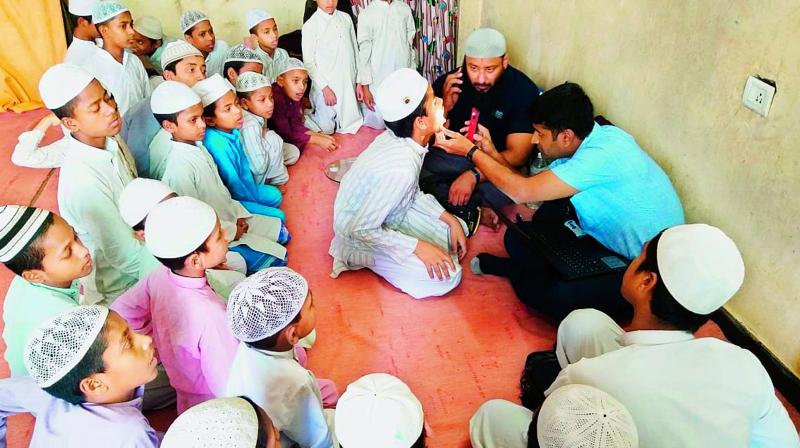Make a difference this Ramzan

The month of fasting is time for piety and charity. It’s time to reflect and show compassion to the less fortunate. While there is no dearth of poor, nearly 3,000 households in the city slums are found to be in dire straits — both financially and health wise. Instead of just donating one can make a difference this Ramzan — with little care and planning.
A timely survey carried out by the Helping Hand Foundation (HHF), a non government public health organisation, has come up with startling details of misery and despair in 22 urban slums dotting the Old City. It’s not just poverty but a combination of factors like unhygienic conditions, poor sanitation, clustered living, lack of access to clean food and water and poor nutritional intake that is taking a toll of people living in N.S. Kunta, Teegal Kunta, Achi Reddy Nagar, Farooq Nagar, Tadban, Bibi Ka Chasma, Vatapally, Takery, Basharathnagar, Guntal Shah, Salheen Colony and Habeeb Colony.
The survey details pull at the heart-strings of the community to remember the deserving while doling out zakat. “By their donations the affluent Muslims can help in framing appropriate interventions for preventive health care,” says Mujtaba Hasan Askari of HHF.
The primary health centre functioning at Masjid-e-Ishaq in Achi Reddy Nagar became the focal point for the survey conducted by trained counsellors. The findings were tabulated and validated by community medicine physicians that work for the HHF. The sample survey covered 3,000 households wherein 1,100 men, 1,400 women and 600 children were screened till April end. According to Askari, 18 per cent of the men (in age group of 30 and above) suffer from hypertension, 11 per cent with diabetes, nine per cent with cardio vascular disease, seven per cent with kidney ailments, 20 per cent with respiratory problems, 16 per cent with joint pains and 18 per cent with skin diseases.
Among women 11 per cent were found suffering from hypertension, eight per cent from diabetes, three per cent with heart disease, six per cent from thyroid problems, six per cent with respiratory disease, 34 per cent with joint pains and 12 per cent with skin ailments. Another notable finding is that almost 11 per cent of young women have reproductive health issues due to frequent pregnancies and as a result they are found to be highly anaemic and malnourished.
Screening of children showed 23 per cent to be wasted (low weight for age) and 20 per cent stunted (low height for age). This apart 15 per cent children were detected with skin infections while 24 per cent showed poor oral and dental health like tooth pain, tartar and tooth decay. The survey further reveals that 30 per cent of children below five years have not been regular in taking vaccination. Many feel the zakat (poor due) model has to stretch beyond funding of madrasa students and distribution of clothes among poor to focus on critical socio-economic issues facing the community. Those intending to reach out to the poor can log on to www.helpinghandf.org.

